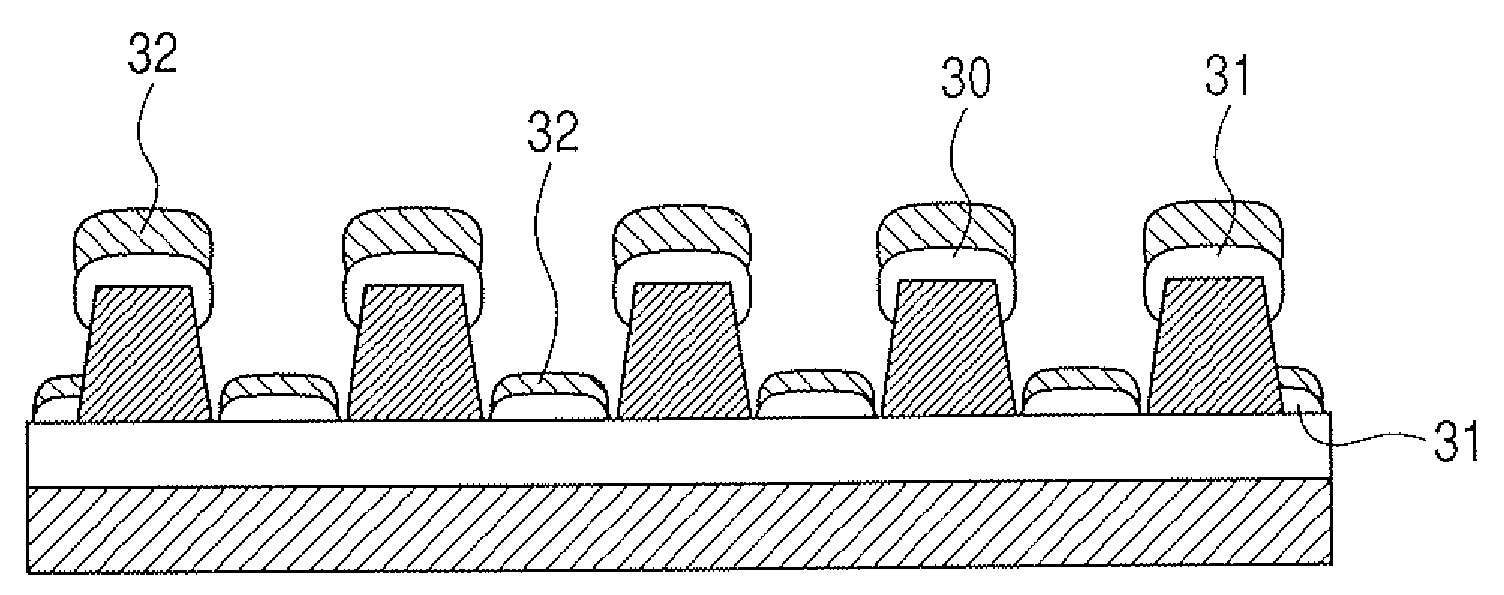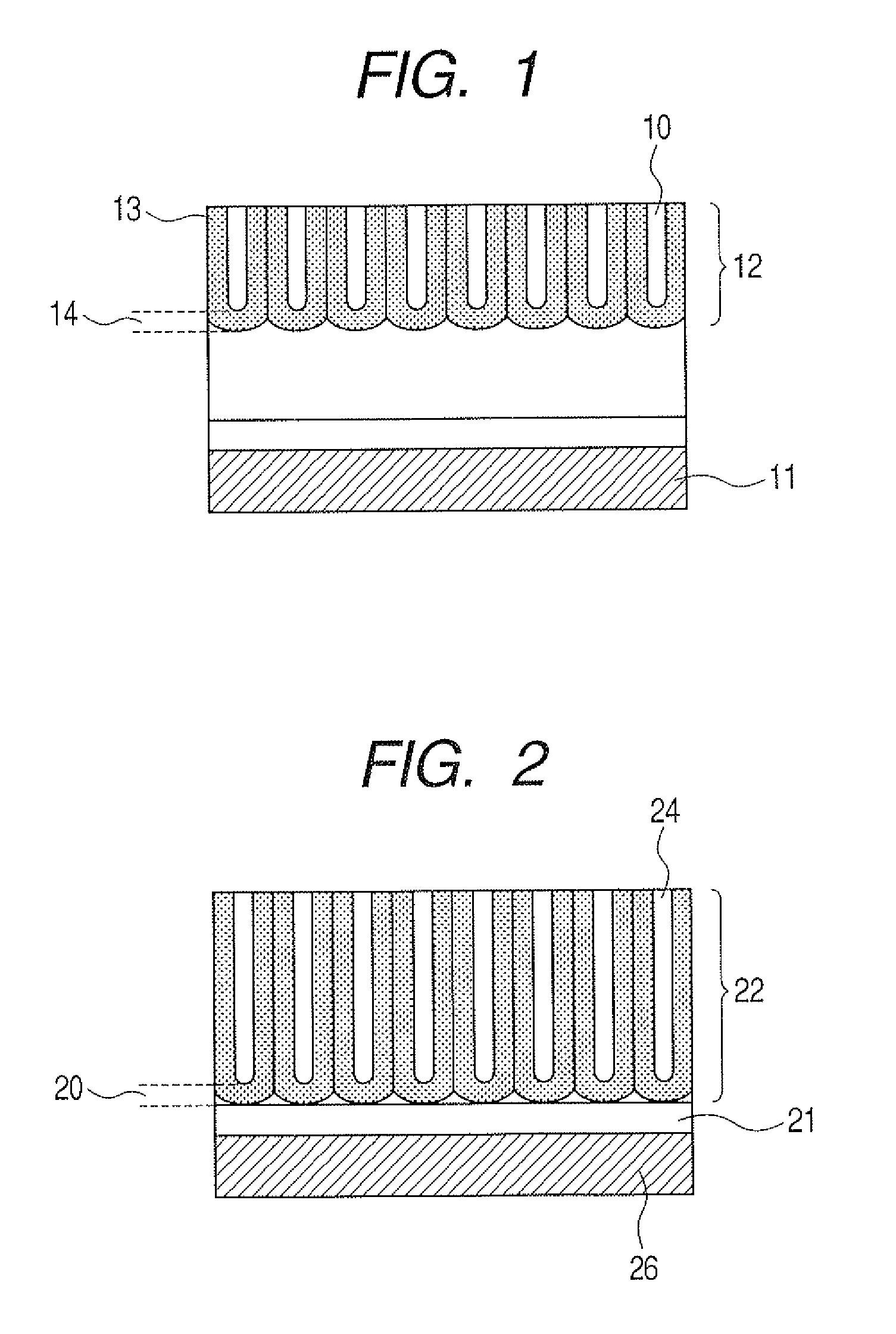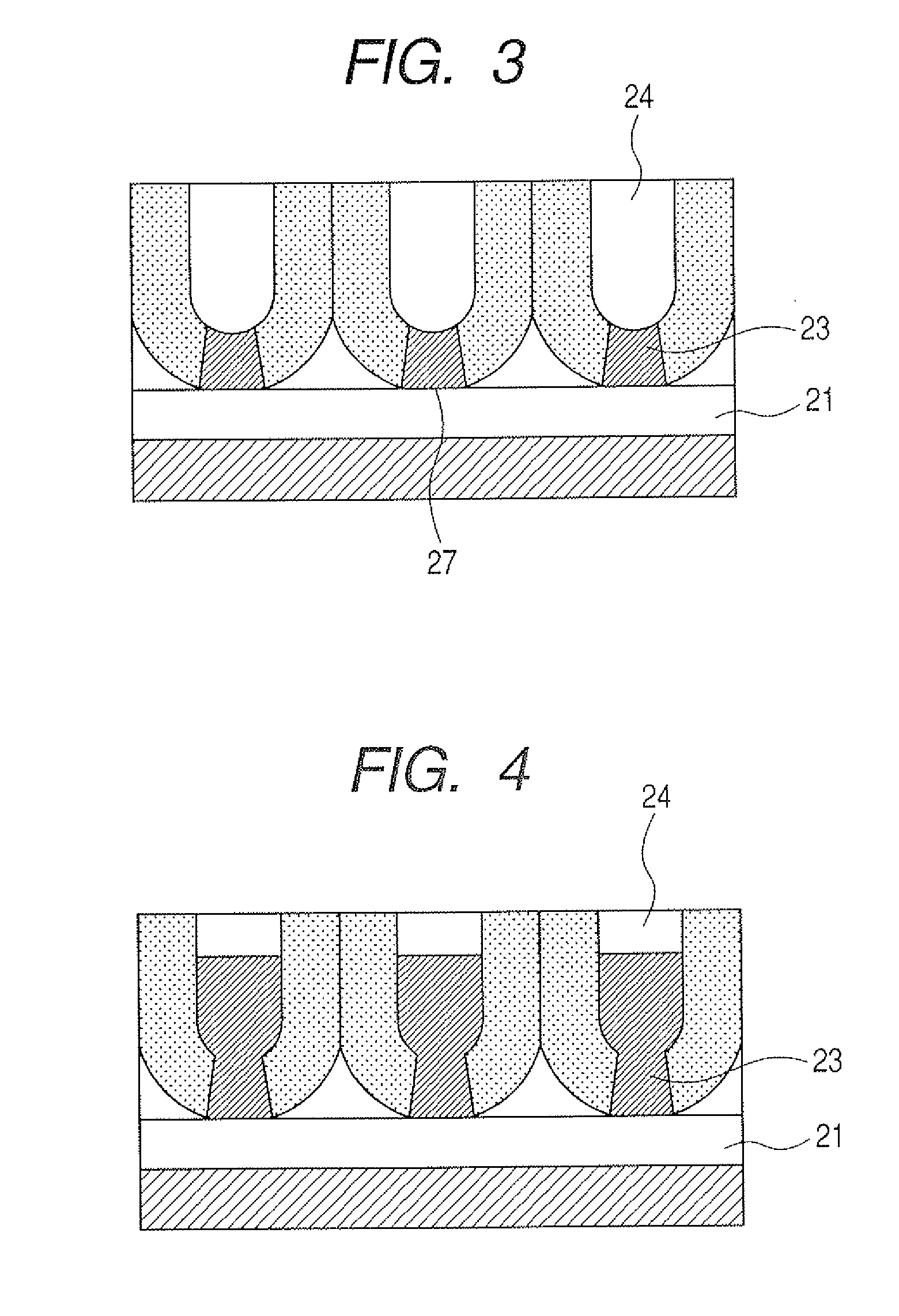Patterned media, method of manufacturing magnetic recording medium, and method of manufacturing a base
a magnetic recording medium and manufacturing method technology, applied in the field of patterned media, can solve the problems of large noise, small increase in recording density, and near 200 gbit/insup>2, and achieve the effect of reducing the quantity of magnetic materials attached to the side surface of the convex member
- Summary
- Abstract
- Description
- Claims
- Application Information
AI Technical Summary
Benefits of technology
Problems solved by technology
Method used
Image
Examples
first embodiment
[0067]A patterned medium caused to be of the configuration including magnetic recording layers of this embodiment has features as described below.
[0068]First, plural convex members are provided in an array form on a substrate, and the convex member has shape such that the cross section at each plane in parallel to the substrate tapers toward the substrate (inverse taper shape). Further, the magnetic recording layers are provided on the upper surface parts of the convex members so that they are not in contact with each other between the adjacent upper surface parts.
[0069]Specifically, description will be given with reference to FIG. 20. In FIG. 20, reference numeral 2990 indicates substrate, reference numeral 2991 indicates convex member, and reference numeral 2992 indicates magnetic film on the member. As occasion demands, different layers for various objects may be interposed between the substrate and the convex member, or between the member and the magnetic film. Reference numeral...
examples
[0156]Examples of the present invention will now be described.
first example
[0157]This example relates to the fact that an uneven structure including regularly arranged projections is provided by anodic oxidation to dispose a magnetic material on the upper part of the projection.
[0158]Ti serving as underlying layer was formed as film on a Si substrate so that the film thickness became equal to 5 nm by sputtering, and AlTi containing Ti 10 atomic % was further formed as film on the Ti layer by sputtering so that the film thickness was equal to 100 nm.
[0159]Next, aluminum alkoxide was coated on the sample surface by the spin-coat process so that its thickness became equal to 20 nm. Subsequently, the sample was baked for 20 minutes at 90° C. thereafter to transfer concave part serving as starting point of anodic oxidation onto the alkoxide surface by the nano in-print method. In this example, mold in which projections having height of 15 nm were arranged in a triangular lattice formed at intervals of 50 nm was pressed onto the alkoxide surface to thereby trans...
PUM
| Property | Measurement | Unit |
|---|---|---|
| height | aaaaa | aaaaa |
| height | aaaaa | aaaaa |
| heights | aaaaa | aaaaa |
Abstract
Description
Claims
Application Information
 Login to View More
Login to View More - R&D
- Intellectual Property
- Life Sciences
- Materials
- Tech Scout
- Unparalleled Data Quality
- Higher Quality Content
- 60% Fewer Hallucinations
Browse by: Latest US Patents, China's latest patents, Technical Efficacy Thesaurus, Application Domain, Technology Topic, Popular Technical Reports.
© 2025 PatSnap. All rights reserved.Legal|Privacy policy|Modern Slavery Act Transparency Statement|Sitemap|About US| Contact US: help@patsnap.com



